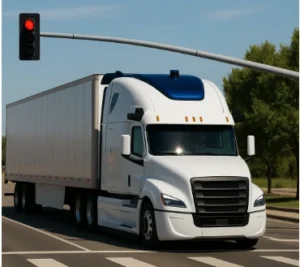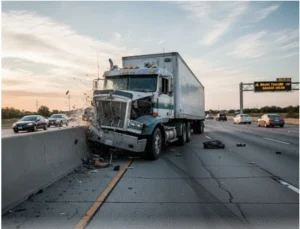Non-compliance with regulations can lead to higher commercial insurance rates for transportation companies.
On November 18, the new DOT regulation, known as Clearinghouse-II, came into effect. It allows federal regulators to require state licensing agencies to downgrade the commercial driver’s license (CDL) of a trucker who fails a drug or alcohol test, prohibiting them from driving. In addition to affecting drivers without a completed return-to-duty process, this regulation will impact commercial insurance rates, as non-compliance may make companies appear high-risk.
The new regulation expands penalties, requiring states to revoke the CDLs of drivers with pending violations. To regain their “non-prohibited” status, drivers must see an approved professional, follow a treatment plan, pass a return-to-duty test, and undergo at least six random drug or alcohol tests throughout the year. Only the employer or third-party administrator can request the return-to-duty test, not the driver.

How do the new regulations affect truck insurance costs?
Non-compliance with regulations can result in higher commercial insurance rates. To mitigate rising insurance costs, truck owners should follow best practices and comply with regulations to avoid burdening their business with high premiums.
Complying with regulatory requirements and improving the company’s safety record can lower commercial insurance rates. Insurance underwriters consider drivers’ records, and those with recent accidents or violations are seen as more likely to have future incidents. Monitoring the qualifications of new drivers and requiring drivers with violations to complete return-to-duty procedures can reduce insurance claims. This, in turn, lowers both risk and insurance premiums.
According to Smart Financial, several actions can help a transportation business keep its insurance rates reasonable. If you believe rate increases could be a concern for your business, consult your provider and consider implementing one of the following recommendations:
- Establish more detailed vehicle maintenance and employee safety procedures.
- Improve your company’s credit score.
- Remove unnecessary types of coverage from your policy and reduce excessively high coverage limits, if applicable.
- File claims only when absolutely necessary.

Complying with regulations: fewer penalties, lower premiums
In addition to DOT regulations affecting truck insurance costs, the rise in nuclear verdicts in truck accidents has also increased these costs. The solution lies in complying with the regulations and requirements set by government authorities to prevent premium increases. Non-compliance with Clearinghouse-II can result in financial penalties, such as fines of up to $6,974 for violating driving prohibition rules. These regulations, designed to improve driver safety, directly impact insurance premiums: non-compliance can raise rates, while compliance can help keep them lower.
In this context, commercial telematics technology is a key tool for ensuring compliance with regulations, making it easier to track and manage compliance, and contributing to cost and risk reduction for businesses. For more information, please contact one of our specialized agents.

Results of Safe Driving Week: more than 2,500 fines and warnings
Operation Safe Driving Week 2025 concluded with a total of 8,739 vehicles stopped. Operation Safe Driver Week 2025 concluded with a significant overview of road

USDOT Withholds $40 Million from California Over English Proficiency “Rule Rebellion”
The U.S. Department of Transportation (USDOT) has announced that it will withhold more than $40 million in federal highway safety funds from California for failing to enforce national English Language Proficiency (ELP) standards for commercial truck drivers.

ICE operation detains 120 drivers along the I-40
A three-day ICE operation along the I-40 led to the detention of 120 drivers for immigration-related violations. A three-day operation along Interstate 40 in western

October’s bankruptcy spike: 5 carriers file for Chapter 11 in just two weeks
During the first half of October five transportation-related companies filed for bankruptcy under Chapter 11. The transportation industry has gone through difficult months, but October

Could It Happen with Trucks? Tesla Investigation Reopens the Debate on Autonomous Freight Safety
Could It Happen with Trucks? Tesla Investigation Reopens the Debate on Autonomous Freight Safety

Road Safety in the U.S.: Faulty Brakes and Slow Tech Adoption Still Cause Thousands of Truck Crashes Every Year
Road Safety in the U.S.: Faulty Brakes and Slow Tech Adoption Still Cause Thousands of Truck Crashes Every Year
